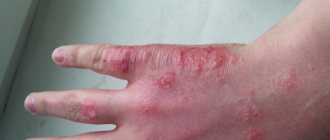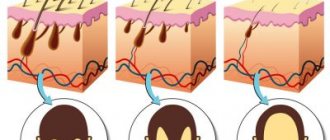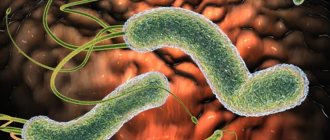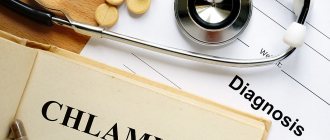Main routes of transmission of HIV infection
Mechanisms of transmission of infection:
- Unprotected sexual intercourse (without a condom).
- Through blood transfusion.
- By injecting drugs.
- From mother to child (through breast milk, in utero).
For prevention, you should know how infection occurs. The greatest likelihood is through sexual contact. Women get infected more easily. The fact is that the area of the vaginal mucosa is much larger than in men. Moreover, sexual intercourse has a higher percentage of infection than other methods. A drug addict's needle is also very dangerous, so addicts use disposable syringes. An HIV-infected mother can infect her child during fetal development or through breast milk.
Who is diagnosed with AIDS?
The transition of HIV infection to AIDS is determined if the patient has a number of criteria:
Positive test for HIV.
- Reducing the number of CD4+ lymphocytes to less than 200 cells per μl of blood. These cells are most affected by the immunodeficiency virus, therefore it is by them that the state of the immune system of a patient with HIV infection is assessed.
- The emergence of AIDS-defining diseases - pathological conditions that in most cases develop in people with HIV due to a critical decrease in immunity.
- Bacterial infections (tuberculosis, severe recurrent pneumonia, diseases caused by atypical mycobacteria, common salmonellosis).
- Fungal infections (severe candidiasis, cryptococcosis, histoplasmosis, Pneumocystis pneumonia).
- Viral infections (chronic damage to the skin, mucous membranes, bronchi, lungs, esophagus, caused by the herpes simplex virus, cytomegalovirus and papillomavirus infections, specific damage to the central nervous system by polyomavirus - multifocal leukoencephalopathy).
- Protozoal infections (toxoplasmosis, cryptosporidosis, microsporidosis).
- Other diseases (Kaposi's sarcoma, invasive cervical cancer, non-Hodgkin's lymphoma, HIV encephalopathy, wasting syndrome, etc.).
AIDS-defining diseases include:
Infectious diseases that affect people with AIDS are called opportunistic diseases. Their peculiarity is that the causative agents of these infections often live in the human body, but the immune system does not give them the opportunity to become active. Activation indicates a serious immunodeficiency. Therefore, the occurrence of opportunistic infections is always a direct indication to be tested for HIV.
What is the likelihood of becoming infected with HIV?
Methods of transmission and likelihood of infection:
- The chance of getting a disease by contacting the blood of a sick person with a healthy one is 100%. A very small amount is enough to cause illness. A scratch or bloody wound, a blood transfusion, a reusable syringe - anything can cause infection.
- Sexually. Unprotected sexual intercourse is especially dangerous for women to become infected, since the area of absorption of the virus is much larger (3 times more likely than in men). With a condom, the likelihood of getting infected is very small, but it is possible. Some scientific experiments have shown that there is a chance of virus penetration through latex (from 0.01% to 0.1%).
- Through what liquids is HIV transmitted, besides the ones mentioned above? Breast milk from an infected mother gives an infant a 20% certainty of infection. You should give up lactation to avoid this by feeding the baby artificially.
- Is HIV transmitted orally? With this act, the risk of infection is very small. For example, with a blowjob, the risk of infection is approximately 0.03%; if a woman has bloody wounds in her mouth, the probability increases. During cunnilingus, the likelihood of getting HIV is minimal if there are no wounds in the man’s mouth, because saliva does not contain the virus. Otherwise, the risk is very high, because women’s secret fluid contains HIV.
- The likelihood of infection during anal intercourse is extremely low. After the appearance of microcracks due to sexual intercourse, the risk increases to 1% (passive partner) and to 0.6 for the active one.
- Unborn children can become infected from infected mothers during pregnancy, this method is called “vertical”. In this case, the risk is very high if you do not take certain medications. Without special therapy, the probability according to statistics is 15-20%; thanks to drugs, the figure drops to 1-2%.
Diagnosis of the disease
For an accurate diagnosis, it is often necessary to be examined over a period of months. Only then can you be sure whether a person is sick or not. When all of the above symptoms are present, you should immediately consult a medical specialist. Only he can order an examination after examining the patient.
If there are alarming symptoms, the specialist will conduct an initial examination and then send you to a specialized center.
Usually the presence of antibodies is the first warning sign. There are special AIDS centers specially equipped for such accurate diagnosis. There are also specialists in this field who have the appropriate competence.
When it is known for sure that sexual relations took place with a sick person, this fact should be taken seriously. You should take the test immediately after this and repeat the procedure after a six-month interval. When persistent diseases begin, this means the progression of the disease. In this case, the diagnosis of AIDS is confirmed. In this case, any other infection may be the most dangerous.
Can HIV infection occur?
There are many misconceptions about how HIV is transmitted. For example, you cannot become infected with it through a handshake, shared dishes, bed linen, on public transport, etc. The myth that HIV is transmitted through airborne droplets has no scientific basis. To prevent the occurrence of a fatal disease, it is important to take preventive measures. But first, it’s useful to know how the virus spreads and in what ways it is not transmitted.
Through a kiss
Answer to the question: “Can you get HIV through saliva?” quite affirmative - it is impossible. This liquid does not contain the immunodeficiency virus. When kissing, there is almost no chance of infection. However, it is worth remembering that the disease is transmitted through blood. If, for example, the lips or mouth of both partners are damaged, the possibility exists.
Through a condom
If you protect yourself with a condom during sexual intercourse, the likelihood of infection is reduced to a minimum. However, some scientists conducted experiments and found that latex in rare cases allows virus cells to pass through. The risk of penetration through latex reaches 0.1%. In this regard, it is recommended to avoid any sexual contact with infected people to prevent the disease.
At home
How is HIV infection transmitted in the home? The virus does not live separately from humans, so it is difficult to get it at home. But if you share a razor or toothbrush with an infected person, the disease will certainly be transmitted when infected blood gets into contact with a healthy person. Using a personal razor, brush, and avoiding any contact with the blood of an infected person are the basic rules for those living with an HIV-infected person.
From mosquito
People are concerned about how HIV is also transmitted, for example, can a mosquito bite infect a healthy person with such a dangerous disease? Blood-sucking parasites are quite a nuisance to tourists in nature and are capable of transmitting parasites, infections, and dangerous diseases (malaria). But the immunodeficiency virus is not transmitted this way. The mosquito bites a person only once, after which it lays larvae and dies. A second contact is excluded, because the mouthparts of mosquitoes deteriorate after the first time and stop working.
At the dentist
For twenty years, not a single case of infection was recorded in the dentist's office. How HIV infection is transmitted is known. The blood contains virus molecules, but outside the human body they quickly die. Standard procedures for instrument disinfection, cabinet sterilization, and dentist gloves ensure the absence of live pests and the transmission of deadly diseases.
For manicure
Those who are afraid of removing hangnails and filing their nails in a salon do not need to be afraid of the manicurist’s tools. There is no such route of transmission of the human immunodeficiency virus. The molecules of this disease quickly die outside the body, and instruments are sterilely processed after each client. In the entire history of the discovery of a fatal disease, no one has yet received it from a manicure.
Signs of the disease
When a person gets such a viral infection, the following changes usually occur:
- Weight is greatly reduced, sometimes to the point of dystrophy;
- Muscle mass is lost;
- Frequent, almost constant colds;
- Signs of diarrhea;
- Pain in the chest area;
- A sharp drop in vision to a minimum;
- Ulcerative formations in the oral cavity;
- Serious lung diseases.
First, all the signs of a cold with fever, sore throat, enlarged lymph nodes. When this passes, seemingly normal life continues, without obvious manifestations of the disease. Its time interval can vary from one or two months to five years or more. That is why such a disease can only be detected by passing tests.
How to avoid getting infected with HIV
Compliance with the following rules will protect you from becoming infected with a deadly virus:
- Protection during sexual intercourse. A man's reluctance to use a condom has absolutely no meaning. Life and health are much more important!
- To undergo medical procedures, use disposable syringes, opened immediately before the procedure.
- Visit only trusted beauty salons and dental clinics with a good reputation
How does the virus work?
Once in a person, the immediate effect of the viral infection begins to destroy the immune system. The patient's body becomes completely defenseless. This is why previously harmless microorganisms become harmful. In this case, complete and massive destruction of cells occurs. Over time, the body itself becomes forced to destroy them. The external environment is detrimental to HIV (a few minutes and it dies). But in humans it lasts up to a week.
Symptoms of HIV infection
The question of how long it takes for HIV to manifest itself does not have a specific answer. Each body fights illness differently. Sometimes signs appear after 14 days in the form of:
- Elevated temperature.
- Inflamed lymph nodes.
- Drowsiness.
- Fevers.
- Fear of bright light.
- Runny nose.
- Cough.
- Rash.
The first symptoms resemble colds and disappear after 15-30 days. Most people infected do not experience or notice any discomfort at the initial stage. During the incubation period, HIV may not manifest itself in any way. Sometimes a person at this time has no idea about his illness at all. After some time, secondary diseases appear, the consequences of which for the body are usually severe.
The most terrible stage of the development of the virus is AIDS. The disease lasts between 6-24 months. It has individual features and forms:
- Lung damage (the most common option).
- Intestinal problems.
- In the form of a nervous illness.
- Damage to mucous membranes.
- Skin rash.
Depending on the form of AIDS, a secondary disease develops. The immune system is unable to fight it and the virus becomes fatal for a person. Some people can live with this problem for up to 25 years, it all depends on the body and methods of treatment. Some people, in rare cases, die within a year. The average life expectancy of those infected according to medical data is 12 years.
Find out how tuberculosis is transmitted from person to person.
Incubation period
Conditions for activation of the immunodeficiency virus:
- the presence of active chronic infections in the body, the pathogens of which constantly stimulate the production of antibodies;
- sufficient activity of T-lymphocytes - cells that carry out immune reactions;
- the presence of T-helpers, which do not participate in immune processes.
The time it takes for HIV to manifest itself after infection is from 2 weeks to 10 years or more. But a person infected with the virus is its carrier, even if the disease has not yet manifested itself.
Some people are at risk. Only not by the possibility of infection, but by the speed of development of the clinical picture of HIV.
People who have enough immune cells and are producing them again:
- Newborns - their T cells are in the growth stage.
- Drug addicts - all their processes are intensified to the maximum.
In most cases, HIV can be detected in such people 1-2 weeks after infection. Congenital forms manifest themselves immediately after birth. The child experiences the prodromal period of HIV infection in the prenatal period.
AIDS treatment
Treatment of AIDS patients includes several areas:
- Mandatory hospitalization of patients in specialized departments of clinics dealing with the problems of HIV-infected people.
- Skilled nursing.
- Complete nutrition.
- Active antiretroviral therapy, which even at the AIDS stage makes it possible to increase the number of CD4+ lymphocytes so that the patient’s body at least somehow begins to resist infections.
- Specific treatment aimed at combating developed secondary diseases.
- Chemoprophylaxis of opportunistic infections











